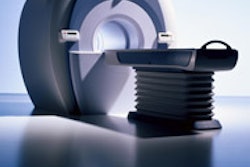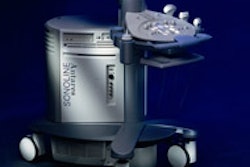There's no disputing it. In the last few years MRI has made enormous strides, in terms of its growing range of protocols, and its positive impact on patient care. However, the modality's exponential growth has come at a cost -- safety standards. If MRI has been radiology's Wild West, then a scary new hombre just moved into town.
High-field extremity systems are beginning to roll out in force. While the focus today is on orthopedic systems, the promising news about breast MRI suggests that a number of specialty scanners may appear in the years ahead. The lure of additional revenue, coupled with the smaller size (and lower cost) of these extremity systems make them extremely attractive for physicians' office installations. But high-field extremity systems come with all the hazards of their bigger siblings, and may not, because of the way they're marketed, receive comparable levels of attention to safety.
Today, you can purchase a superconducting 1-tesla extremity MRI unit that requires a space only a little larger than an exam room to be sited. And although we're talking about a total footprint of perhaps 200 sq ft (61 sq meters) -- as opposed to 1,000 sq ft (305 sq meters) for a short-bore MRI system -- the facility must still be prepared with radiofrequency (RF) shielding and cryogen venting. However, the marketing and installation materials we've seen focus on the return on investment and ease of installation, and don't address magnetic contamination or the need for patient screening and magnet safety.
Even if these high-field extremity systems look more like ATMs than MRI units, at their heart they are high-strength magnets. Even 25 liters of liquid helium can quench to become 19,000 liters of gaseous helium (roughly two-thirds the total volume of an exam room). The magnets are strong enough to interfere with biostimulation devices, torque ferrous implants within a patient, and cause missile-effect accidents. The fact that one may be down the hall in your local chiropractor's office doesn't mean that they are harmless.
And just as hospital radiology departments and imaging centers are really coming to terms with the American College of Radiology's white paper on MR safety and its four-zone screening model, along come these diminutive systems that, by casting off the latest developments in facility safety, reframe the entire MRI issue in economic terms. Apparently the bottom line is all about capturing revenue and slashing costs.
Perhaps patient safety and screening protocols can become value-added services from the vendor, but shouldn't they really be integral to the product? We respect that healthcare today is a highly competitive market, but shouldn't safety be a prerequisite for any healthcare product or service?
Extremity MRI could turn out to be a tremendous boon both for the industry and healthcare by lowering cost and enabling targeted care in areas that can't currently support the installation of a traditional system. At the moment, however, some vendors appear to be shirking their responsibilities for the ACR four-zone principle and other facility safety protocols because they undermine the bottom line, which apparently is the single greatest marketing tool for extremity systems.
Just a few months ago it seemed that tremendous potential for growth already existed within the MR systems currently installed and on the market: new scans, new interventional procedures, and new applications for MRI. The biggest thing on the horizon was the shift to 3-tesla. Today, the economics of radiology have caught up with us and present a whole new challenge.
Returning to our earlier analogy, high-field extremity MRI is the wild young cowboy wannabe who just moved in down the road. Hopefully he will surprise us all with a quickly developed sense of maturity. Unfortunately, sometimes that maturity comes from tragedy, and tragedy is a much too expensive way to learn.
By Robert Junk and Tobias Gilk
AuntMinnie.com contributing writers
November 17, 2004
Reprinted from www.mri-planning.com by permission of the authors. If you would like more information on any aspect of MR facility design or safety, please contact Robert Junk or Tobias Gilk at Jünk Architects.
Related Reading
The fire extinguisher in your MRI suite: will it save a life or take one? September 22, 2004
What your vendor may not have told you about magnetic contamination, July 27, 2004
Universal room design can mitigate change costs, May 16, 2003
Facility-planning implications of the new MRI safety guidelines, September 9, 2002
MRI design resonates with functional, aesthetic qualities, July 22, 2002
Copyright © 2004 Jünk Architects, PC



















